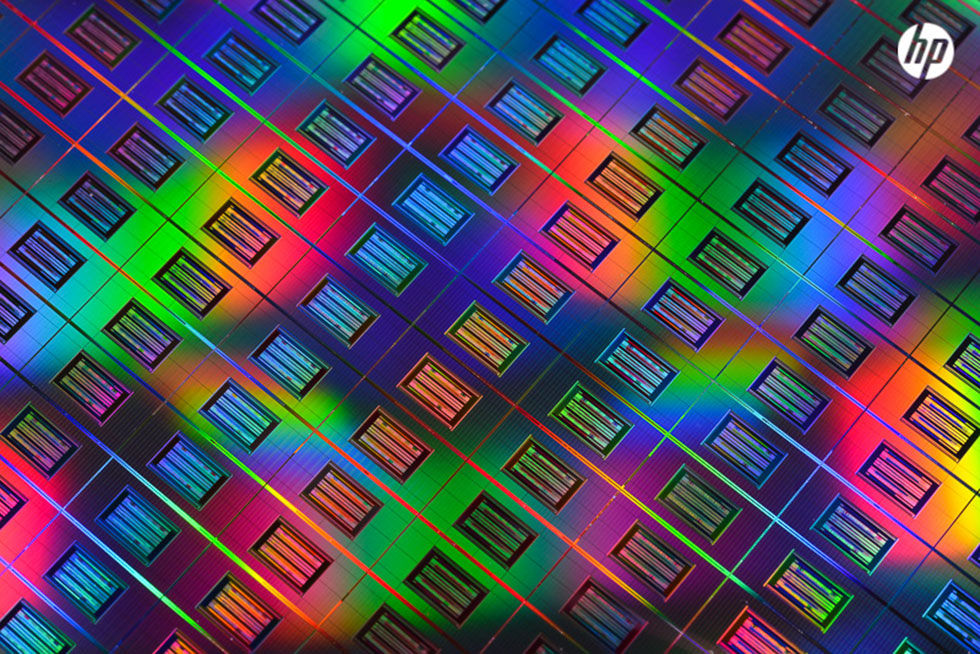
Intel and Micron's "holy grail" of memory—3D XPoint—doesn't even exist yet, but HP and SanDisk have now announced that they're partnering up to make their own competing version of this so-called "storage class memory." There's something about the HP/SanDisk announcement that feels a bit off, though, so bear that in mind as you read this story.
Back in July, Intel and Micron announced that it had created a new type of memory that has 1,000 times the performance and endurance of NAND flash, while also being 10 times denser than DRAM. There were some power and cost reductions touted, too. All in all, it was exactly what the enterprise computing market has a hankerin' for: oodles of fast, cheap memory to keep massive databases and other big data-style stuff in-memory for faster computation.
At the time, Intel and Micron said the new memory (pronounced "Three-dee cross point") was already in production and would be sampled "later this year with select customers." At the time, we asked Intel for some more details—you know, so that we could work out what was actually happening under the bonnet—but so far, no such details or specifications have been forthcoming. We haven't yet heard of any customers receiving usable memory chips based on 3D XPoint tech, either.
The HP and SanDisk press release describes something very similar to 3D XPoint. In fact, it's nigh on identical: "The technology is expected to be up to 1,000 times faster than flash storage and offer up to 1,000 times more endurance than flash storage. It also is expected to offer significant cost, power, density and persistence improvements over DRAM technologies."
-
A diagram of the Intel/Micron 3D XPoint technology; sadly, HP/SanDisk hasn't provided a similar diagram for its new memory tech. In reality, though, the HP/SanDisk tech is probably going to be quite similar to this—but until we have some more details, it's just an educated guess.
-
Two 3D XPoint dies, rated at 128Gb each.
-
A glorious wafer of 3D XPoint dies.
While the HP/SanDisk memory tech doesn't have a name, one advantage that it has over 3D XPoint is that we have a slightly better idea of how it actually works: the press release all but confirms that it will be based on memristors/ReRAM. HP invented the memristor way back in 2008, but commercialisation has always been just out of reach.
SanDisk's involvement is a bit puzzling, too. SanDisk has only ever mentioned ReRAM in passing, as a futuristic tech that's some way out on its roadmap. SanDisk does bring manufacturing expertise, though, which might be exactly what HP needs to bring its memristor tech to market.
Perhaps the oddest part of the HP/SanDisk press release, however, is its mention of The Machine—a long-term HP Labs research project that aims to "reinvent the fundamental architecture of computing." The Machine was meant to be based on memristors, silicon photonics (on-chip/board optical communications), and other newfangled tech that HP Labs had been working on. In June of this year, though, memristors were removed from The Machine's roadmap. Martin Fink, head of HP Labs, said in an interview, “We way over-associated [The Machine] with the memristor. We’re doing what we can to keep it working within existing technology."
Today's press release, though, says, "Together, we plan to bring new memory solutions to market and accelerate adoption in the enterprise, while simultaneously advancing HP’s development of The Machine to enable a new computing model over the long term."
In summary, it's all a bit confusing. HP and SanDisk are clearly trying to hitch their wagon to Intel and Micron to stop them from simply running away with the entire storage-class memory market. On the flip side, the press release says absolutely nothing about when HP/SanDisk might release their new memory tech, nor whether they've even produced a working prototype.
When we quizzed Intel representatives about 3D XPoint earlier in the year, they steadfastly refused to give away any technical details, but they were adamant that it isn't vaporware and that it will actually come to market soon.
reader comments
72